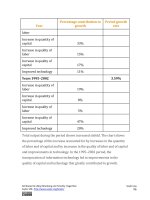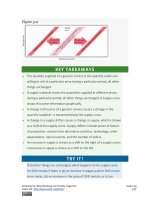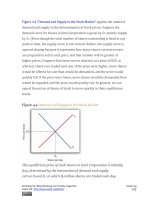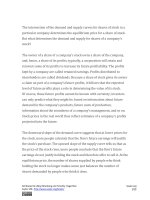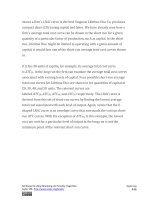Authors libby rittenberg 782
Bạn đang xem bản rút gọn của tài liệu. Xem và tải ngay bản đầy đủ của tài liệu tại đây (444.89 KB, 1 trang )
We will also explore the economics of public sector choices. Economists
put the notions of self-interest and the marginal decision rule to work in
the analysis of choices made by people in the public sector—voters,
government employees, interest groups, and politicians.
15.1 The Role of Government in a
Market Economy
LEARNING OBJECTIVES
1. Discuss and illustrate government responses to the market failures of
public goods, external costs and benefits, and imperfect competition
and how these responses have the potential to reduce deadweight
loss.
2. Define merit and demerit goods and explain why government may
intervene to affect the quantities consumed.
3. Discuss ways in which governments redistribute income.
What do we want from our government? One answer is that we want a
great deal more than we did several decades ago. The role of government
has expanded dramatically in the last 75+ years. In 1929 (the year the
Commerce Department began keeping annual data on macroeconomic
performance in the United States), government expenditures at all levels
(state, local, and federal) were less than 10% of the nation’s total output,
which is called gross domestic product (GDP). In the current century, that
share has more than tripled. Total government spending per capita,
adjusted for inflation, has increased more than six fold since 1929.
Attributed to Libby Rittenberg and Timothy Tregarthen
Saylor URL: />
Saylor.org
782
